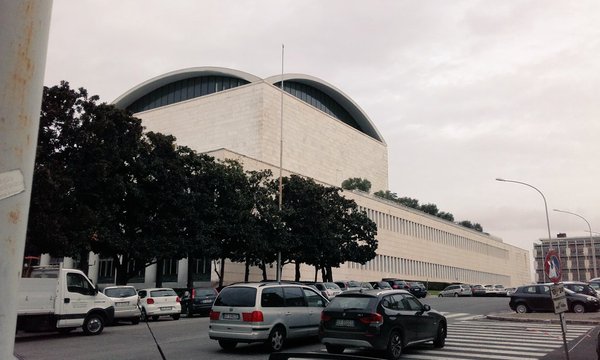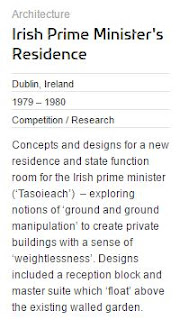Flowers for Franco
Last week I learned that a letter from Carlow County Council will wing its way across the Atlantic to America congratulating Donal Trump on winning the US presidential election. An interesting question is did this same council propose sending a similar letter to President Obama after his electoral victory? Should I have been at all surprised? It immediately reminded me of a curious occasion when Limerick too fawned over far-right leaders.
On the 28th
of January 1939 the Irish Press reported that the Limerick Corporation
congratulated General Francisco Franco on the capture of Barcelona aided by
fascist Italy and Nazi Germany ‘on his fight for Christianity and freedom.’ This laudatory gesture was accompanied
by a bouquet of flowers for the Spanish dictator. Furthermore this group passed
a resolution demanding the Fianna Fáil government to ‘recognise the Administration of the Patriot Leader’ thus breaking diplomatic relations. The
same government which unwaveringly stood by De Valera’s declaration of
neutrality in the face of immense criticism and pressure from the Allies during
the Second World War. Limerick was the first Irish city and one of the first in
the world to recognise Franco as the legitimate ruler of Spain. This event in
the Limerick story is indicative of the Spanish Civil War’s impact on Irish
diplomatic policy and the intensity of Catholic religiosity in Ireland.
 This short newspaper article
stated that James Dalton proposed the resolution of congratulations, eventually
seconded by Ald. James Reidy after Michael Hartney withdrew his secondment.
Reidy took it further requesting government recognition of Franco. The Mayor
Ald. Dan Bourke responded to this request with ‘We could leave that to the
Government to decide.’ Ald. Reidy’s rejoinder defending the totalitarian
dictator is today ironic with the benefit of hindsight ‘We are free citizens of
a free country and we are entitled to make a request to our Government.’ In
spite of Reidy’s appeal the Mayor was unyielding ‘That is so, but we can be
assured that our Government will do the right thing at the right time’ and later would say ‘We are only giving
expression to the wishes of the people, irrespective of political views.’ After
receiving unanimous votes Bourke finally declared both resolutions adopted, not
because of the strength of Reidy’s arguments but because of his party did not
control the corporation. This proposal to recognise Franco as the Spanish head
of state by isolationist Éire came a month before both Britain and France.
This short newspaper article
stated that James Dalton proposed the resolution of congratulations, eventually
seconded by Ald. James Reidy after Michael Hartney withdrew his secondment.
Reidy took it further requesting government recognition of Franco. The Mayor
Ald. Dan Bourke responded to this request with ‘We could leave that to the
Government to decide.’ Ald. Reidy’s rejoinder defending the totalitarian
dictator is today ironic with the benefit of hindsight ‘We are free citizens of
a free country and we are entitled to make a request to our Government.’ In
spite of Reidy’s appeal the Mayor was unyielding ‘That is so, but we can be
assured that our Government will do the right thing at the right time’ and later would say ‘We are only giving
expression to the wishes of the people, irrespective of political views.’ After
receiving unanimous votes Bourke finally declared both resolutions adopted, not
because of the strength of Reidy’s arguments but because of his party did not
control the corporation. This proposal to recognise Franco as the Spanish head
of state by isolationist Éire came a month before both Britain and France.
James Reidy and
Michael Hartney would follow Dan Bourke in holding mayoral office, 1944-45 and
1945-46 respectively. Dan Bourke would be mayor for the record period of five
years[1].
He joined the Volunteers in 1913 and was one of those who welcomed Pádraig
Pearse, Éamon de Valera, Tom Clarke, Willie Pearse and other leaders to
Limerick in 1915. He remained on the Republican side during the Civil War, was
arrested in 1922 and imprisoned in Kilmainham and Mountjoy. The following year
he was transferred to Tintown No.1 Internment camp at the Curragh from which he
escaped through a tunnel in April 1923. He was later recaptured and held
prisoner for a considerable time. In 1920 he was elected a member of the
Limerick Corporation in the Republican interest and was later to become one of
the founder-members of Fianna Fáil.
Michael Hartney was
also a Fianna Fáil member to City Council and was one of the most active
members of the Volunteer movement during the War of Independence. His home in
Davis Street was blown up by the Black and Tans as a reprisal. He was twice
captured by the Black and Tans and served a term in Wormwood Scrubbs Prison
where he went on hunger strike. On his release he resumed his volunteer
activities and after being captured by the “Tans” for a second time he was held
as protection against I.R.A ambushed and was later interned on Spike Island. Hartney
would be secretary for the Mid-Limerick Brigade of the Old I.R.A for over 40
years at the time of his death[2].
As the exchange described in the initial report on the recognition of Franco
government implied Reidy was elected as a Fine Gael TD.
On the 25th
of February both local and national press presented its readers with the
extraordinary headline ‘Franco thanks, Letter to the Mayor of Limerick.’ Mayor
Bourke had received the following letter from the National Government’s
Minister for Foreign Affairs, dated February 3rd; Dear Sir, On behalf of Generalissimino
Franco, through his Minister for Foreign Affairs, I am to convey to you the
lively gratification of his Excellency for the enthusiastic message of
congratulations which you sent him on learning of the magnificent victory at Barcelona.
I take this opportunity of extending to you my most friendly greetings.’
Ironically De Valera
gave a statement to the Associated Press which appeared in newspapers only five
days previously declaring ‘the desire of
the Irish people and the desire of the Irish government is to keep our nation
out of war. The aim of Government policy is to maintain and to preserve our
neutrality in the event of war.’ One can only imagine the reaction of
readers in Limerick the recording of this exchange between City Hall and Spain.
One Dublin resident, a Mr R. Jacob, addressed an indignant letter addressed to
the mayor outlining his reaction to the news of the recognition of Franco ‘This
must be the greatest disgrace that ere has befallen the city of Limerick.[3]’
Mayor Bourke replied to this letter stating ‘the resolution passed by the
Limerick Corporation in regard to the victory of General Franco was an
unanimous one, and he has, therefore, no apology to offer.’
This was not the first
time that a fascist dictator involved in the Spanish Civil War had sent
communiqué to neutral Ireland. A telegram from Italy’s Mussolini on the 13th
of March 1937 contained a message of support for the Irish Brigade, which
translates as ‘Let the Legionnaires know
that I am following hour after hour their action and it will be crowned by
victory.[4]’
The recognition of
Franco’s regime, notwithstanding the fact that Reidy had to convince his
colleagues of its validity, is not remarkable when taken within social and
political context. It must be remembered that the decades following the birth
of the Irish State saw an unquestioning acceptance of clerical domination over
education, health and public morality. This was particularly true in Limerick
where the Arch-confraternity of the Holy Family attached to the Redemptorist
church of Mount St. Alphonsus had the highest level of attendance not only in
Ireland bit in Europe with 10,000 registered members in the 1930s. One
contemporary commentator referred to Limerick as ‘one of the most pious towns in Ireland[5].’
The year 1936 saw the emergence of Patrick Belton’s Irish Christian Front and
general Irish opinion was overwhelmingly pro-Franco with O’ Duffy’s men leaving
these shores to the sound of cheering crowds as they left to defend Catholicism.
The War in Spain was seen as a religious rather than political conflict and
Spain was regarded, like Ireland, as a historically Catholic nation. The nation took comfort in the fact that whatever divided Irish people
politically, they were firmly united when it came to their Catholic faith.
The letter from
the Corporation was not the only correspondence Franco received from Limerick
that year. In July 1939 a Co. Limerick schoolboy, Timothy Ahern, wrote to the
General congratulating him on his victory and expressed admiration of his
‘great deeds in defence of Christian ideals.’ The reply to this fan mail from
Franco appeared in the local press in the September which read as follows;
‘The Colonel
Secretary of his Excellency, the Prime Minister and Commander-in-Chief of the
National Army, salutes Timothy Ahern and he has the pleasure of presenting to
him the thanks of the Commander-in-Chief for his congratulations on the victory
of our glorious army, enclosing at the same time a photograph of the
Commander-in-Chief in accordance with his desires.’
In the age of
social media sites contemporary audiences have the benefit of up to the minute
news reports and film footage. Armed with a smartphone any ordinary bystander
can have the capability of being a wartime correspondent. Before we judge the
actions of these men in the council chambers in Limerick on that day in January
1939 we must bear in mind the exaggerated claims and propaganda they were fed.
Franco fully appreciated the power of the media along with letters from
Limerick.
This article was written by Emma Gilleece for the Limerick International Brigade Memorial Trust (LIBMT) publication From the Shannon to the Ebro; the Limerick Men who fought fascism, published in 2014 thanks to funding from Limerick City of Culture 2014. It is available to purchase from O'Mahonys Booksellers.
[1]
Limerick Leader, 13 Oct. 1951.
[2]
Limerick Leader, Funeral of the late Mr
Michael Hartney, 29 Apr. 1964.
[3]
Letter dated 21 Feb. 1939 is held by
Limerick Museum, Ref. No. 1987.2028.2
[4]
P13/115, Robert Stradling Collection, Special Collections, (UL, 2002).
[5]
Frank O’Connor, ‘Irish Miles’, (London, 1947). His impression of Limerick was
written in 1939.




































